The Bill Theory That's Revolutionizing the Art World
Blur: NFT | Blur: NFT login | Blur: NFT connect | WalletConnect | Traders | What Is Blur Crypto
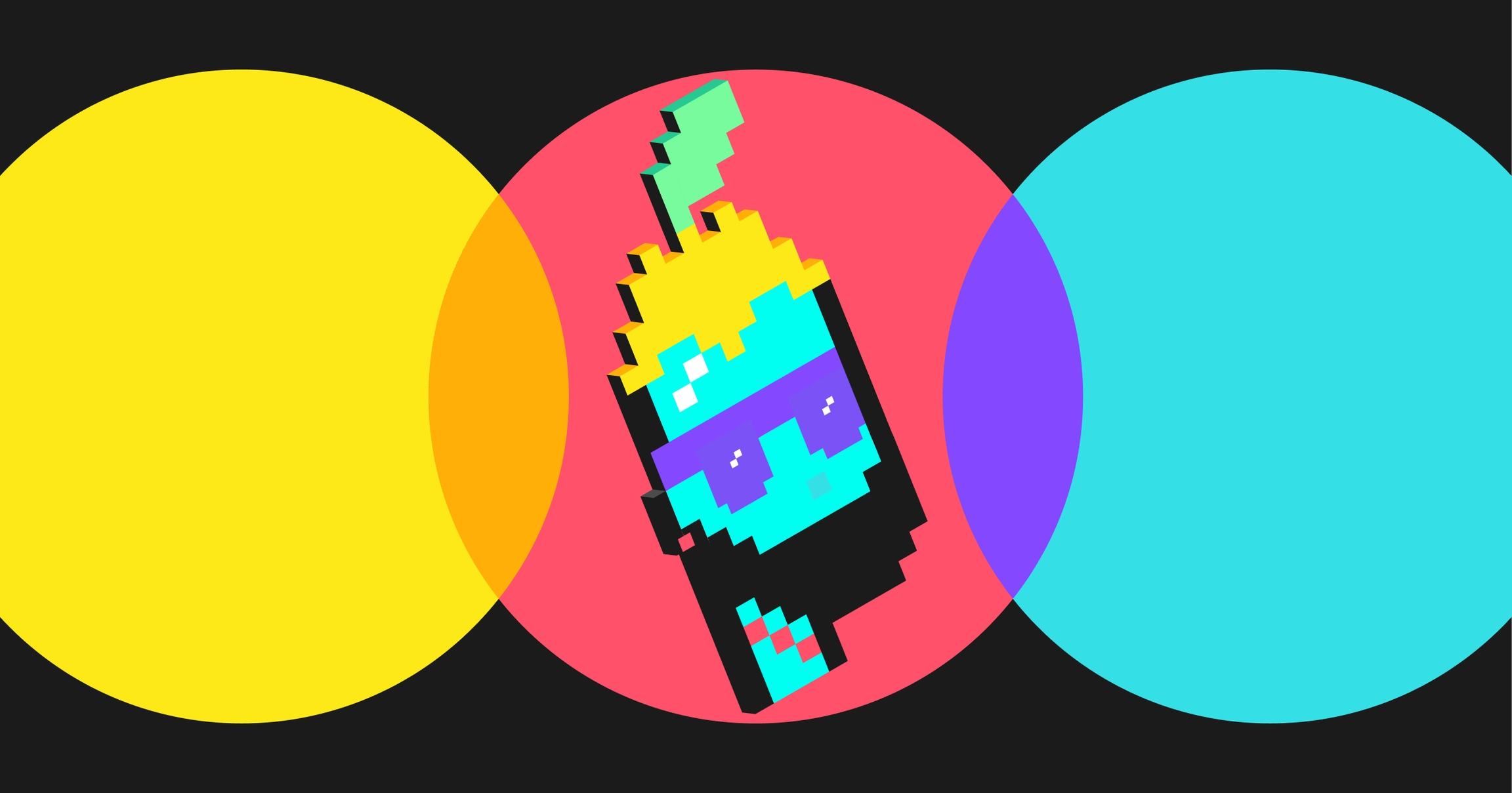
Blur: NFT | Blur: NFT login | Blur: NFT connect | WalletConnect | Traders | What Is Blur Crypto
In recent years, the art world has experienced a major disruption with the rise of cryptocurrency and blockchain technology. One of the most significant developments to come out of this intersection is the emergence of Crypto NFTs, or non-fungible tokens, which have completely transformed the way we think about and interact with art. These digital assets, represented by unique tokens on the blockchain, have given artists unprecedented control and ownership over their work, and have opened up a whole new world of possibilities for creators and collectors alike.
The Bill Theory, named after its creator Bill Tai, posits that crypto NFTs are not only revolutionizing the art world, but also creating an entirely new economy around digital art. According to this theory, the issuance and trading of NFTs have made it possible for artists to directly monetize their work, without the need for intermediaries such as galleries or auction houses. This has democratized the art market, allowing artists of all backgrounds to showcase and sell their creations to a global audience, without being limited by traditional gatekeepers.
Furthermore, the Bill Theory argues that crypto NFTs have created an unprecedented level of scarcity and provenance, two key factors that have long determined the value of traditional art. By tokenizing digital assets on the blockchain, artists can ensure that their work is unique and cannot be replicated or counterfeited. Additionally, the transparent nature of blockchain technology means that every transaction and ownership transfer is recorded and can be traced back to its original creator, providing a level of authenticity and provenance that was previously impossible in the digital realm.
The impact of crypto NFTs on the art world has been astounding, with artists and collectors embracing this new form of digital expression and ownership. From virtual art galleries and immersive experiences to the sale of multi-million dollar NFT artworks, the possibilities seem endless. While there are still skeptics who question the long-term viability and value of crypto NFTs, there is no denying the transformative power they have already had on the art world, and their potential to redefine how we create, consume, and appreciate art in the future.
Crypto NFTs: The Revolution in Art
Over the past few years, the art world has been undergoing a revolution, thanks to the emergence of crypto NFTs. NFTs, or non-fungible tokens, have completely transformed the way artists create, sell, and monetize their work.
The Rise of NFTs
In simple terms, NFTs are unique digital assets that are stored on a blockchain. Unlike cryptocurrencies such as Bitcoin or Ethereum, NFTs cannot be exchanged on a one-to-one basis. Each NFT has a distinct value and cannot be replicated or replaced.
One of the most significant applications of NFTs is in the art world. Artists can now mint their creations as NFTs and sell them directly to collectors. This eliminates the need for intermediaries such as galleries or auction houses, allowing artists to retain more control over their work and earn a higher percentage of the sales.
The Benefits of Crypto NFTs in Art
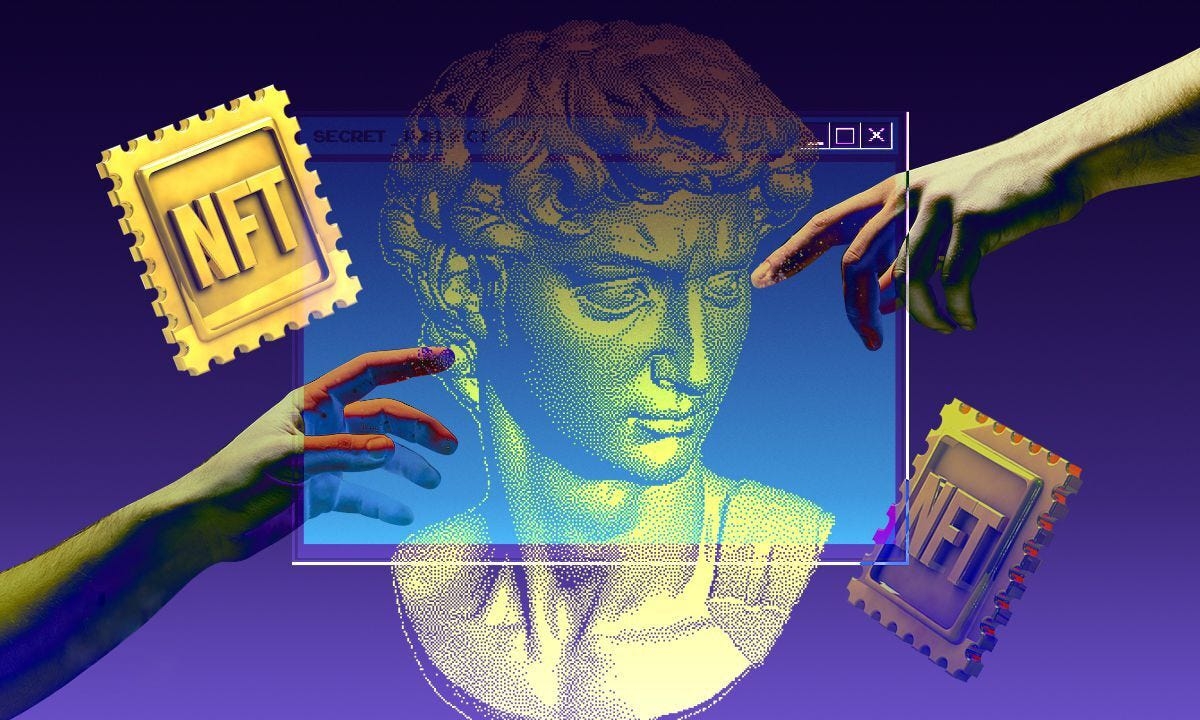
There are several advantages to using crypto NFTs in the art world:
Ownership and Provenance
NFTs provide a secure and transparent way to establish ownership and prove the authenticity of a digital artwork. This eliminates the risk of forgeries and increases the value of the original piece.
Royalties and Resale
Artists can set royalties for their NFTs, ensuring they receive a percentage of future sales. This allows artists to benefit from the appreciation of their work in the secondary market.
Global Reach
Crypto NFTs have a global reach, allowing artists to connect with collectors from all over the world. This opens up new opportunities for exposure, collaborations, and sales.
Democratizing Access
NFTs make art more accessible by removing barriers such as high entry costs or exclusivity. Anyone with an internet connection can purchase and own a piece of digital art, democratizing the industry.
As the adoption of crypto NFTs continues to grow, the art world is undergoing a paradigm shift. Artists are empowered with more creative freedom, collectors have new ways to invest in art, and the relationship between creators and their audience is evolving. Crypto NFTs are truly revolutionizing the art world, opening up a world of possibilities for artists and collectors alike.
Exploring the Impact of the Bill Theory
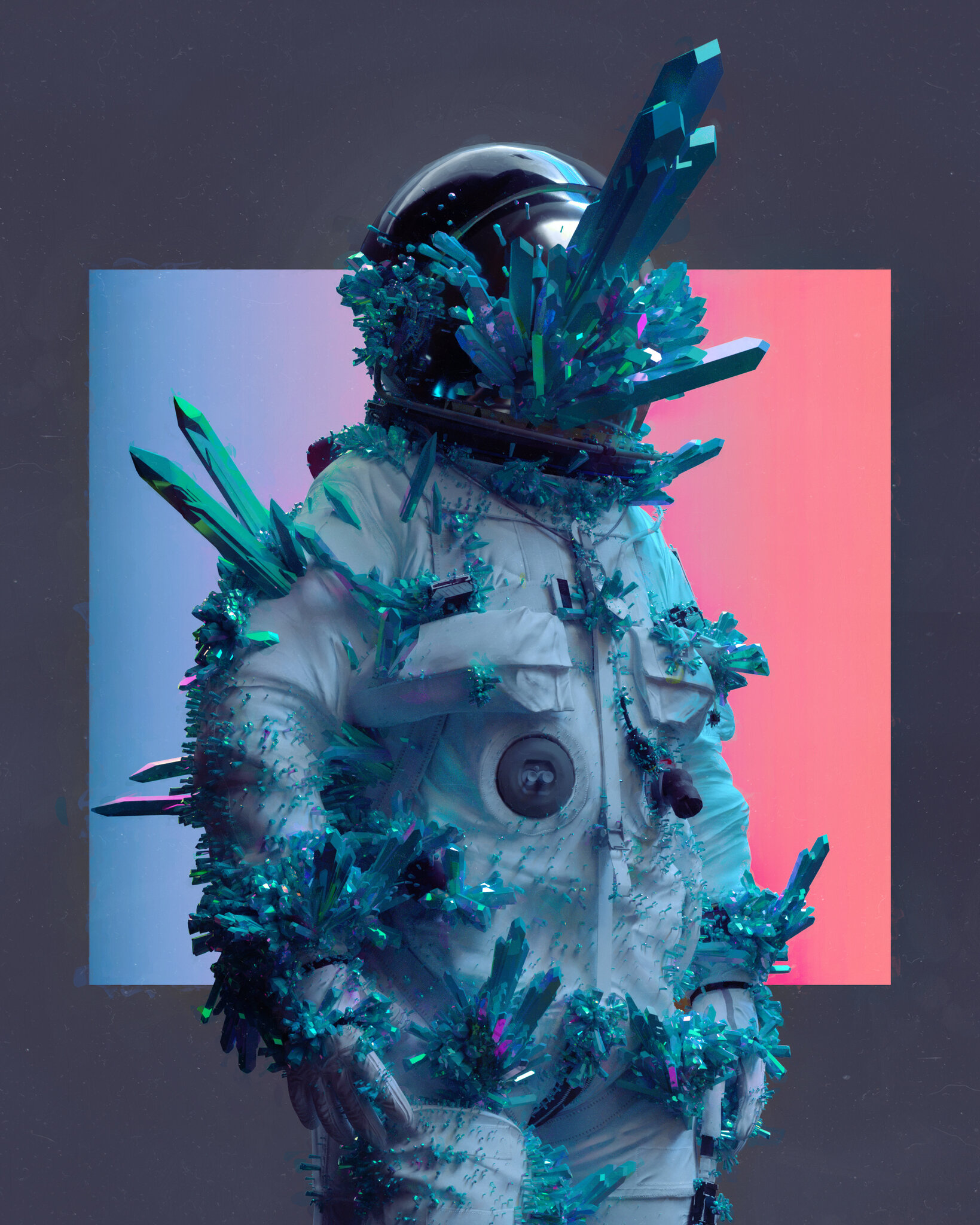
The emergence of crypto NFTs has brought about a significant transformation in the art world. Among the various theories explaining this phenomenon, the Bill Theory stands out as a powerful concept with a profound impact on the art market.
Understanding the Bill Theory

The Bill Theory, named after William Nichols, a renowned economist, argues that crypto NFTs have the potential to revolutionize the way art is bought, sold, and valued. According to this theory, the scarcity and uniqueness of NFTs make them highly desirable and valuable to collectors and investors.
NFTs, or non-fungible tokens, are digital assets that use blockchain technology to certify their authenticity and ownership. Unlike cryptocurrencies like Bitcoin or Ethereum, which are interchangeable, NFTs represent something unique and cannot be exchanged on a one-to-one basis. This uniqueness is what sets NFTs apart and makes them valuable in the art market.
Under the Bill Theory, the scarcity of NFTs greatly enhances their value. Since each NFT is unique, owning an NFT means owning a digital representation of a particular artwork or collectible that cannot be replicated or replaced. This rarity and exclusivity make NFTs highly sought after by art enthusiasts, collectors, and investors.
The Impact on the Art Market
The Bill Theory has sparked a revolution in the art market by injecting a new level of excitement, value, and accessibility. Traditional art markets have long been dominated by galleries, auction houses, and intermediaries who controlled the buying and selling process. With the advent of NFTs, artists can directly connect with collectors and buyers, bypassing these intermediaries.
This democratization of the art market has allowed artists to reach a global audience and receive fair compensation for their work. NFTs provide artists with a platform to sell their digital creations instantly and securely, without the need for galleries or auction houses. This direct interaction eliminates the dependence on gatekeepers, enabling artists to gain recognition and monetize their talent on their terms.
Additionally, the Bill Theory has introduced new revenue streams for artists through the sale of NFTs. Artists can earn royalties every time their NFTs are resold, ensuring a sustainable income even after the initial sale. This creates a long-term relationship between artists and collectors, fostering collaboration and support for artists' ongoing creative endeavors.
In conclusion, the Bill Theory has had a profound impact on the art world by redefining the value, accessibility, and distribution of art through crypto NFTs. This theory challenges traditional notions of art ownership and democratizes the market, empowering artists and collectors alike. As the art world continues to embrace blockchain technology and NFTs, the implications of the Bill Theory will undoubtedly continue to shape and transform the industry.
The Rising Popularity of Crypto NFTs

Crypto NFTs have been gaining immense popularity in the art world, as they provide artists with a new way to monetize and showcase their digital works. NFTs, or non-fungible tokens, are unique digital assets that utilize blockchain technology for authentication and ownership verification.
One of the key reasons for the rising popularity of crypto NFTs is the ability to provide provenance and scarcity to digital art. With traditional digital art, it can be easily copied or reproduced without any way to prove its originality. However, by utilizing blockchain technology, artists can ensure that their digital creations are limited in supply and cannot be replicated.
This newfound scarcity has created a sense of exclusivity and value among collectors and art enthusiasts. Crypto NFTs allow for the creation of limited-edition artworks, which can be sold and traded in the digital marketplaces. These marketplaces, such as Blur.io, provide a platform for artists to connect directly with collectors and showcase their unique creations.
With Blur.io, artists can leverage the benefits of the platform, which offers a seamless and secure trading experience. Artists can list their crypto NFTs for sale and gain exposure to a global audience of art enthusiasts and collectors. Additionally, Blur.io provides features such as customizable galleries and social media integration, enabling artists to promote their works and engage with their audience.
Furthermore, crypto NFTs have also opened up new revenue streams for artists. Traditionally, artists relied on physical sales or licensing agreements to generate income from their artworks. However, with the advent of crypto NFTs, artists can sell their digital creations directly to collectors, eliminating the need for intermediaries and potentially earning higher profits.
In conclusion, the rising popularity of crypto NFTs in the art world signifies a transformative shift in the way digital art is created, sold, and appreciated. With blockchain technology providing authentication and provenance, artists can monetize their digital creations while collectors can own unique and scarce digital assets. Platforms like Blur.io have emerged as key players in this ecosystem, offering artists a seamless and secure platform to connect with collectors and showcase their works. To learn more about Blur.io and its features and benefits, connect with Blur.io: Discover the features and advantages of Blur.io.
Unlocking the Potential of Digital Art
The emergence of crypto NFTs has revolutionized the art world, giving digital artists a platform to showcase and monetize their creations in ways never before possible. By leveraging blockchain technology, artists can create unique digital artworks that are one-of-a-kind and easily verifiable. These digital assets, known as non-fungible tokens (NFTs), have opened up a world of possibilities for artists, collectors, and enthusiasts alike.
One of the key advantages of digital art is its accessibility. Unlike traditional art forms that are often confined to physical galleries, digital artworks can be shared and enjoyed by anyone with an internet connection. This means that artists can reach a global audience and potentially sell their work to collectors from around the world.
Furthermore, digital art can be easily reproduced and distributed without losing its original quality. This opens up new opportunities for artists to collaborate with other creators and explore new mediums and techniques. The ability to remix and build upon existing digital artworks also encourages a culture of creativity and innovation.
With the rise of crypto NFTs, artists can now authenticate and prove ownership of their digital creations, which has been a longstanding challenge in the digital art world. Buyers can have confidence in the provenance and rarity of the artwork they are purchasing, creating a sense of value and scarcity.
Platforms like Blur.io are at the forefront of this digital art revolution. By connecting artists with collectors through secure and transparent transactions, Blur.io allows artists to showcase their work and reach a wider audience. With features such as auctions, galleries, and a user-friendly interface, Blur.io provides a seamless experience for both artists and collectors.
In conclusion, crypto NFTs have unlocked the potential of digital art, transforming the way we create, share, and value artistic expressions. The opportunities for artists are endless, and platforms like Blur.io are empowering artists to navigate this new landscape with ease. In a world where digital experiences are becoming increasingly important, crypto NFTs are shaping the future of art.
Do you want to learn more about the features and benefits of Blur.io? Connect with Blur.io: Discover the features and benefits of Blur.io.
The Blurring Lines of Traditional and Digital Art
The advent of crypto NFTs has brought about a revolution in the art world, blurring the lines between traditional and digital art forms. In the past, traditional art forms such as painting and sculpture were considered the pinnacle of artistic expression. However, with the rise of digital technologies and the internet, artists are now exploring new avenues of creative expression.
Crypto NFTs, or non-fungible tokens, allow artists to tokenize their digital artwork, creating unique digital assets that can be bought, sold, and traded on blockchain platforms. This has opened up a world of possibilities for artists, allowing them to monetize their digital creations in a way that was previously difficult or even impossible.
One of the main advantages of crypto NFTs is their ability to provide provenance and authenticity to digital artwork. Unlike traditional art forms, where the original piece is physically present and can be verified, digital art has often been plagued by issues of copyright infringement and plagiarism. With crypto NFTs, artists can now attach a unique token to their digital artwork, ensuring that it is one-of-a-kind and cannot be replicated or stolen.
The rise of crypto NFTs has also resulted in a democratization of the art world. While traditional art forms were often limited to a privileged few who could afford to own or view them, digital art is easily accessible to anyone with an internet connection. This has allowed emerging artists to gain recognition and build a following online, bypassing the traditional gallery system.
However, the blurring lines between traditional and digital art have also raised questions about the value and authenticity of art. Critics argue that digital art lacks the tangibility and physicality of traditional art forms, and therefore cannot possess the same intrinsic value. Additionally, the ease with which digital art can be reproduced and shared online has led to concerns about the commodification and devaluation of art.
Nevertheless, the transformation brought about by crypto NFTs in the art world is undeniable. It has expanded the definition of art, encompassing not only traditional forms but also digital creations. As technology continues to advance, the boundaries between traditional and digital art will continue to blur, paving the way for new and exciting forms of artistic expression.
The Role of Blockchain in Art Authentication
Blockchain technology has emerged as a game-changer in various industries, and the art world is no exception. With the rise of crypto NFTs (non-fungible tokens), blockchain has introduced a new level of security and transparency in art authentication.
Traditionally, art authentication has been a complex and subjective process. Experts analyze various factors such as style, technique, and provenance to determine the authenticity of a piece. However, this process can be prone to human error and forgery.
By utilizing blockchain technology, artists and collectors can now create a digital certificate of authenticity for their artworks. This certificate is stored on a decentralized ledger, making it tamper-proof and easily verifiable. Each certificate is linked to a unique token, ensuring that it cannot be duplicated.
One of the key benefits of blockchain-based art authentication is increased trust. Buyers can be confident in the provenance and authenticity of their purchases, reducing the risk of fraud. Additionally, artists and creators can establish copyright and ownership rights with ease.
Blockchain also empowers artists by enabling them to retain control over their creations. Through smart contracts, artists can set conditions and receive royalties whenever their artwork is resold. This allows artists to benefit from the appreciation of their work and create a sustainable income stream.
Furthermore, blockchain-based art authentication has the potential to democratize the art world. With traditional systems, only a select few experts had the authority to authenticate artworks. This created a barrier to entry for emerging artists. However, blockchain technology opens up opportunities for artists of all backgrounds to showcase their talent and gain recognition.
In conclusion, blockchain technology is revolutionizing art authentication. By leveraging the decentralized ledger and digital certificates of authenticity, artists and collectors can ensure increased trust, transparency, and control. This technology has the potential to reshape the art world by making it more accessible and secure for all stakeholders.
Empowering Artists through Crypto NFTs
The emergence of crypto NFTs has revolutionized the art world, providing artists with new opportunities for empowerment and financial success. By leveraging blockchain technology, artists can now tokenize their artwork and sell it directly to collectors without the need for intermediaries like galleries or auction houses.
One of the key benefits of crypto NFTs is the ability to establish a direct connection between artists and their audience. Through blockchain platforms, artists can interact with their fans, receive feedback, and build a community around their work. This direct engagement not only empowers artists but also allows them to gain valuable insights and inspiration.
Another empowering aspect of crypto NFTs is the potential for artists to earn ongoing income through royalties. Unlike traditional sales where artists receive a one-time payment, NFTs can be programmed to automatically transfer a percentage of each subsequent sale back to the original artist. This opens up a new stream of revenue for artists throughout the lifespan of their artwork.
By embracing crypto NFTs, artists also gain greater control over their intellectual property rights. The transparent and immutable nature of blockchain ensures that the ownership and provenance of the artwork are permanently recorded. This provides artists with the ability to protect their creations from unauthorized use or plagiarism.
Crypto NFTs also offer artists the potential for increased exposure and recognition. Through blockchain platforms and marketplaces, artists have access to a global audience and can showcase their work to a much wider range of collectors and enthusiasts. This exposure can lead to collaborations, commissions, and other opportunities that may have been more challenging to achieve in traditional art channels.
In conclusion, the rise of crypto NFTs has empowered artists by providing them with new avenues for financial success, direct engagement with their audience, ongoing royalties, control over intellectual property rights, and increased exposure. This revolutionary technology is transforming the art world, breaking down barriers, and giving artists the tools they need to thrive in the digital age. To learn more about crypto NFTs and how to get started, visit CÓMO INICIAR SESIÓN EN BLUR.IO.
The Accessibility of Crypto NFTs for Art Collectors
Crypto NFTs are significantly transforming the art world, and one of the key advantages they offer is increased accessibility for art collectors. In the past, traditional art collecting required individuals to have significant financial resources, connections to galleries, and knowledge of the art market. However, with the emergence of crypto NFTs, the barriers to entry have been lowered, allowing more people to participate in the art collecting world.
One of the main reasons for this increased accessibility is the fractional ownership feature offered by crypto NFTs. Traditional art collecting often involved purchasing entire artworks, which could be incredibly expensive. With crypto NFTs, art collectors now have the option to own a fraction of an artwork, making it more affordable for a wider range of individuals. This fractional ownership model opens up the art market to a larger pool of collectors who may not have had the means to purchase entire pieces previously.
Global Reach
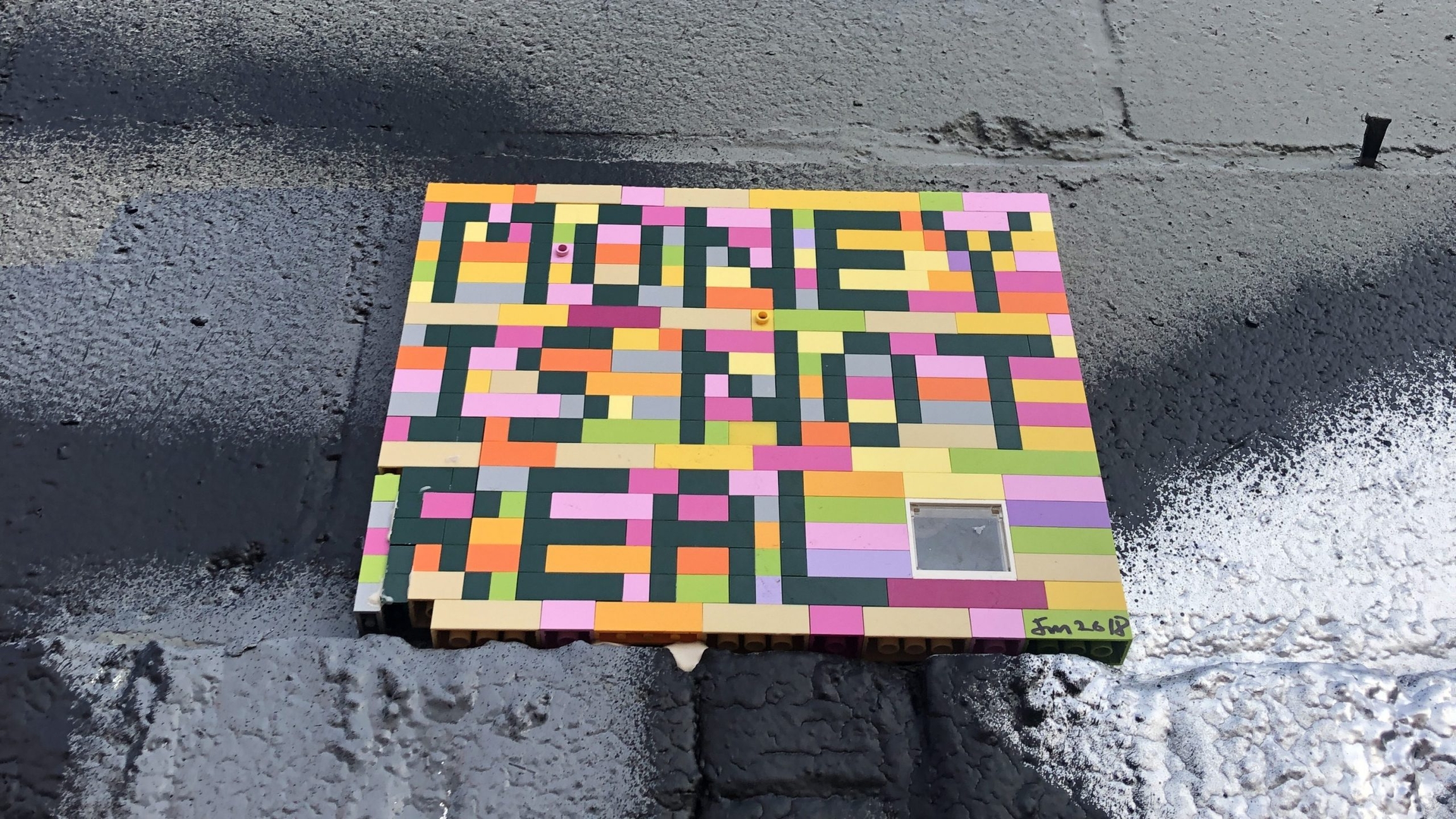
Another aspect of accessibility that crypto NFTs provide is the ability to collect art from around the world without physical limitations. Traditional art collecting often required collectors to be in close proximity to galleries and events. With crypto NFTs, art collectors can browse, buy, and sell artworks from anywhere in the world with an internet connection. This global reach allows collectors to discover and engage with artists and artworks they may have never encountered otherwise.
Democratizing the Art Market
The democratizing effect of crypto NFTs extends beyond just accessibility. By utilizing blockchain technology, crypto NFTs provide artists with the ability to bypass traditional gatekeepers, such as galleries and auction houses. This gives artists more control over their work and allows them to directly sell their creations to a global audience. Similarly, collectors have the opportunity to support and engage with emerging artists directly, without the need for intermediaries.
In conclusion, crypto NFTs are revolutionizing the art world by making art collecting more accessible to a wider audience. The fractional ownership feature, global reach, and democratizing effect of crypto NFTs are empowering both artists and collectors, creating new opportunities and shifting the dynamics of the traditional art market.
Increased accessibility through fractional ownership
Ability to collect art from around the world
Empowering artists and supporting emerging talent
Challenges and Limitations in the Crypto NFT Art Market
The rise of crypto NFTs has sparked a revolution in the art world, offering artists new ways to monetize and showcase their work. However, like any emerging market, the crypto NFT art market also faces challenges and limitations that need to be addressed for its sustained growth and development.
1. Lack of Regulation and Legal Uncertainty
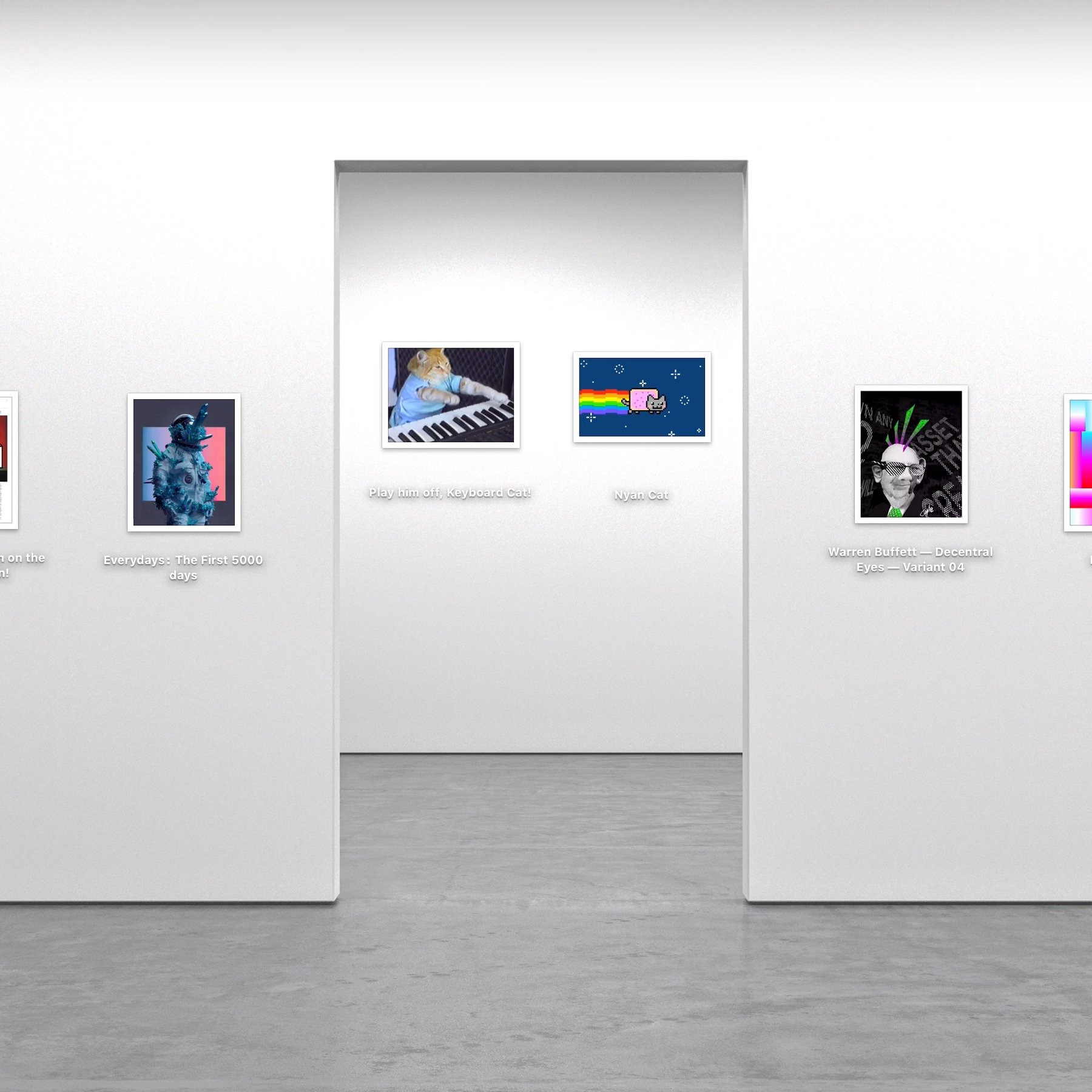
One of the primary challenges in the crypto NFT art market is the lack of regulation and legal uncertainty. Since the market operates on blockchain technology and digital assets, it is difficult to determine ownership rights, copyright infringement, and intellectual property protection. This ambiguity often raises concerns among artists, collectors, and investors.
2. Environmental Concerns
Another important challenge is the environmental impact of crypto NFTs. The process of minting and trading NFTs requires significant computational power and energy consumption, contributing to the carbon footprint. As the demand for NFTs grows, addressing these environmental concerns becomes crucial for the sustainable development of the market.
3. Market Saturation and Oversupply
The increasing popularity of crypto NFTs has led to a rapid influx of artists and NFT platforms, resulting in market saturation and oversupply. The sheer volume of NFTs being created and listed for sale can make it challenging for artists to stand out and for collectors to navigate the market effectively. This oversupply can also lead to a decline in the overall value and exclusivity of NFTs.
4. Exclusivity and Accessibility
Exclusivity and accessibility are two opposing challenges in the crypto NFT art market. While NFTs offer artists the opportunity to create unique and limited editions of their work, they can also create barriers to access for collectors and enthusiasts due to their high prices. Striking a balance between exclusivity and accessibility is important to ensure the market remains inclusive for both creators and buyers.
5. Scalability and Blockchain Limitations
Scalability is a critical limitation in the crypto NFT art market. As the number of NFT transactions increases, blockchain networks can become congested, leading to slower transaction times and increased fees. This scalability issue hampers the user experience and limits the potential growth of the market. Additionally, blockchain technology itself has limitations in terms of storage capacity and artwork display, which need to be addressed for a seamless user experience.
In conclusion, while crypto NFTs have brought about transformative changes in the art world, the market still faces various challenges and limitations. Addressing these concerns, such as regulatory framework, environmental impact, market saturation, exclusivity, accessibility, scalability, and blockchain limitations, is crucial for the sustainable development and growth of the crypto NFT art market.
Financial Opportunities for Artists in the Crypto NFT Space
The introduction of crypto non-fungible tokens (NFTs) has completely transformed the art world, opening up a plethora of new financial opportunities for artists. Traditionally, artists have relied on galleries and auction houses to sell their work and earn a living. However, the emergence of NFTs has disrupted this model, allowing artists to directly connect with their audience and monetize their creations in unique ways.
One of the main financial benefits of the crypto NFT space for artists is the ability to receive royalties. When artists mint an artwork as an NFT, they can include smart contracts that automatically entitle them to a percentage of future sales. This means that the artist can continue to earn money each time their artwork is sold on the secondary market, ensuring a recurring income stream. This is a significant departure from the traditional art market where artists often do not receive any ongoing financial benefits from resales of their work.
Additionally, the crypto NFT space provides artists with a platform to directly sell their artwork to collectors, eliminating the need for intermediaries. This allows artists to retain more creative control and keep a larger portion of the sale price. By leveraging blockchain technology, artists can authenticate the ownership and provenance of their artwork, providing buyers with enhanced confidence in their purchase. The lack of intermediaries also reduces the fees and commissions that would typically be taken by galleries or auction houses, further increasing the artist's financial gains.
Crypto NFTs also present new opportunities for artists to experiment with different revenue models. For example, they can create limited edition digital artworks or offer exclusive access to behind-the-scenes content or events. By leveraging scarcity and the unique qualities of the blockchain, artists can create additional value and attract collectors who are willing to pay a premium for these exclusive offerings. This can result in higher financial returns for the artist and a stronger connection with their audience.
Furthermore, the global nature of the crypto NFT space allows artists to reach a much broader market beyond their local geographic region. Artists can engage with collectors and art enthusiasts from around the world, increasing their exposure and potential sales. This global audience not only provides artists with a wider customer base but also opens doors to collaborations and opportunities to showcase their work internationally.
In conclusion, the emergence of crypto NFTs has revolutionized the financial landscape for artists. It offers unprecedented opportunities for artists to earn passive income through royalties, maintain creative control, experiment with new revenue models, and access a global market. As the crypto NFT space continues to flourish, artists are poised to benefit greatly from the financial possibilities it presents.
Critics and Skeptics: Debunking Misconceptions about Crypto NFTs
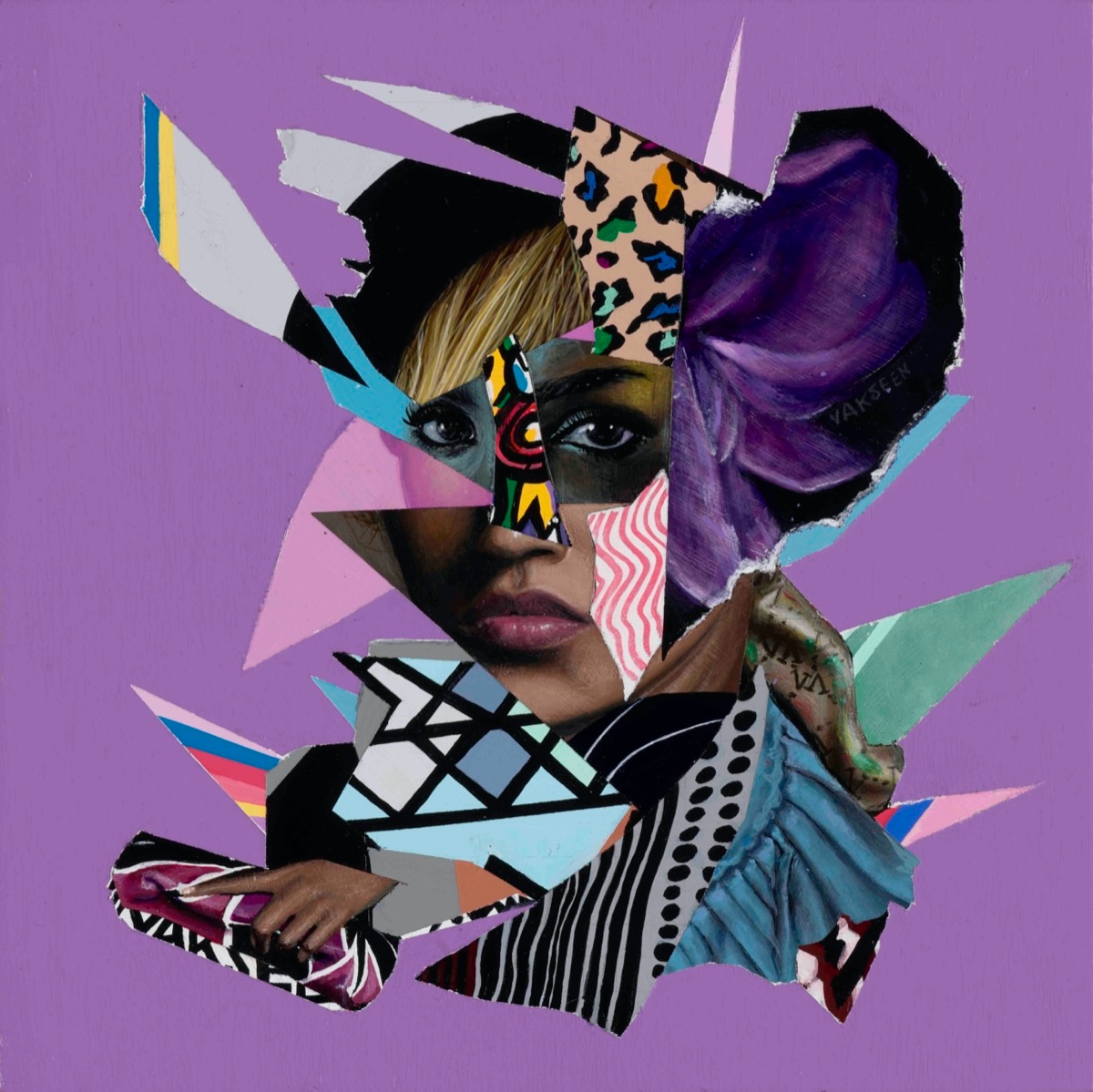
As crypto NFTs gain more popularity in the art world, they also face their fair share of criticism and skepticism. However, many of these misconceptions are based on a lack of understanding or misinformation. Here, we debunk some of the most common myths surrounding crypto NFTs:
1. Lack of value: One of the main criticisms leveled against crypto NFTs is the belief that they hold no real value. However, this notion is flawed. Crypto NFTs derive their value from their scarcity and the demand from collectors and enthusiasts. Just like traditional art, the value of a crypto NFT is subjective and can fluctuate based on market trends and the reputation of the artist behind it.
2. Environmentally unfriendly: Another misconception is that crypto NFTs are harmful to the environment due to the energy-intensive nature of blockchain technology. While it is true that blockchain networks consume energy, it is worth noting that not all crypto NFTs use the same level of energy. Many new platforms are being developed to address this concern and find more eco-friendly alternatives.
3. Lack of authenticity: Some skeptics argue that owning a digital artwork through a crypto NFT does not provide the same level of ownership and authenticity as owning a physical artwork. However, the blockchain technology underlying crypto NFTs ensures unique ownership and provenance. Each NFT is associated with a specific digital signature that verifies its authenticity and originality.
4. Limited to art world: Despite their strong presence in the art market, crypto NFTs are not limited to the art world. They have the potential to revolutionize various industries such as music, gaming, fashion, and more. With the ability to tokenize digital assets, crypto NFTs offer creators a new way to monetize and distribute their work, opening up new possibilities beyond traditional models.
5. Inaccessible to the average person: Some critics argue that crypto NFTs are only accessible to a select few, excluding the average person from participating in this new digital art movement. However, many platforms are actively working to democratize the space, making it more user-friendly and inclusive. Lower transaction costs, simplified onboarding processes, and educational initiatives aim to bridge the gap and make crypto NFTs more accessible to a wider audience.
While criticisms and skepticism are natural when new technologies emerge, it is important to separate fact from fiction when it comes to crypto NFTs. As the art world continues to evolve, crypto NFTs offer exciting opportunities for artists, collectors, and enthusiasts alike.
Exploring the Bill Theory in the Crypto NFT Art Market
The art world has undergone a revolutionary transformation with the rise of crypto NFTs. These non-fungible tokens have opened up new possibilities for artists and collectors alike. One theory that has gained traction is the Bill Theory, which suggests that the value of an artwork lies in the relationship between the artist's reputation and the scarcity of the NFT.
According to the Bill Theory, the reputation of an artist plays a crucial role in determining the value of their art in the crypto NFT market. Artists with an established reputation and a strong following are more likely to command higher prices for their NFTs. This is because collectors believe that artworks from renowned artists have greater long-term value and are more likely to appreciate over time.
However, reputation alone is not enough to determine the value of an artwork in the crypto NFT art market. Scarcity also plays a significant role. In traditional art markets, scarcity is often determined by factors such as the number of physical copies or the rarity of the materials used. In the crypto NFT art market, scarcity is determined by the limited number of NFTs minted for a particular artwork. The rarer an NFT is, the higher its perceived value.
Combining reputation and scarcity, the Bill Theory posits that the value of a crypto NFT artwork is determined by the equation: Value = Reputation x Scarcity. This formula suggests that the more renowned an artist is and the scarcer their NFTs are, the higher the value of their artwork becomes.
The Bill Theory has had a profound impact on the crypto NFT art market. Collectors now pay close attention to an artist's reputation and the rarity of their NFTs before making a purchase. This has created a dynamic and competitive marketplace where artists strive to build their reputation and collectors eagerly seek out scarce NFTs.
In conclusion, the Bill Theory offers valuable insights into the value of crypto NFT artworks. By focusing on the relationship between an artist's reputation and the scarcity of their NFTs, this theory has reshaped the art market and provided new opportunities for artists and collectors in the digital age.
The Future of the Art World: Crypto NFTs as a Game-Changer
Crypto NFTs have taken the art world by storm, offering a unique way for artists to create and sell digital artwork. Unlike traditional mediums, crypto NFTs are digital assets that can be bought, sold, and traded using blockchain technology.
One of the main advantages of crypto NFTs is their ability to establish provenance and ownership. Every crypto NFT is tied to a unique digital token that verifies its authenticity and tracks its ownership history on the blockchain. This not only ensures the security and integrity of the artwork but also allows artists to receive royalties every time their artwork is sold or traded.
Moreover, crypto NFTs have opened up new opportunities for artists to monetize their work. In the past, artists often struggled to make a living from their art due to issues like copyright infringement and limited exposure. However, with crypto NFTs, artists can easily sell their work directly to collectors, bypassing traditional intermediaries like galleries and auction houses.
Furthermore, crypto NFTs have democratized the art world, allowing artists from all backgrounds and locations to participate. Traditional barriers to entry, such as geographic location or connections, no longer hold artists back. Instead, the focus is on the quality and uniqueness of the artwork itself.
Additionally, crypto NFTs have introduced a level of excitement and interactivity to the art world. Collectors can not only own a piece of artwork but also engage with it in a way that was previously unimaginable. For example, some crypto NFTs can be programmed to change over time or include interactive elements that allow collectors to be part of the artistic experience.
In conclusion, crypto NFTs are transforming the art world by offering a new and innovative medium for artists to create and sell their work. With their ability to establish provenance, increase monetization opportunities, democratize the art world, and introduce interactivity, crypto NFTs are poised to be a game-changer in the future of art.
How are crypto NFTs transforming the art world?
Crypto NFTs are transforming the art world by providing artists with a new way to sell and monetize their work. They allow artists to create unique digital assets that can be bought, sold, and traded on blockchain platforms, providing a new level of transparency and authenticity in the art market.
What is the "bill theory" mentioned in the article?
The "bill theory" mentioned in the article refers to the idea that crypto NFTs could revolutionize the way artists and collectors interact. The theory suggests that by tokenizing artworks and using blockchain technology, artists can receive ongoing royalties whenever their work is resold, similar to how musicians receive royalties for their songs. This could provide artists with a more sustainable income stream and allow them to benefit from the increasing value of their work.
Are crypto NFTs limited to digital art?
No, crypto NFTs are not limited to digital art. While digital art has been at the forefront of the NFT boom, NFTs can represent any unique asset, including physical artworks. Artists can tokenize physical artworks by creating a digital representation of the artwork or by attaching a physical certificate of authenticity to the NFT. This opens up new possibilities for artists to sell and trade their physical artworks in a secure and transparent manner.
What are some benefits of using crypto NFTs for artists?
There are several benefits of using crypto NFTs for artists. Firstly, NFTs provide artists with a new revenue stream through the sale and resale of their work, including the potential for ongoing royalties. Secondly, NFTs offer artists increased control and transparency over the ownership and provenance of their artwork. Additionally, NFTs allow artists to reach a global audience and connect directly with collectors, bypassing traditional art galleries and intermediaries.
What challenges and criticisms do crypto NFTs face in the art world?
Crypto NFTs face several challenges and criticisms in the art world. One criticism is the environmental impact of blockchain technology, as the energy consumption required for mining and transactions can be high. There are also concerns about the speculative nature of the NFT market and the potential for fraud or copyright infringement. Additionally, some artists and critics argue that NFTs prioritize digital art over other forms of artistic expression, and that the hype around NFTs detracts from the intrinsic value of the artworks themselves.
Blur: NFT | Blur: NFT login | Blur: NFT connect | WalletConnect | Traders | What Is Blur Crypto
2022-2024 @ Crypto nfts are transforming the art world according to the bill theory